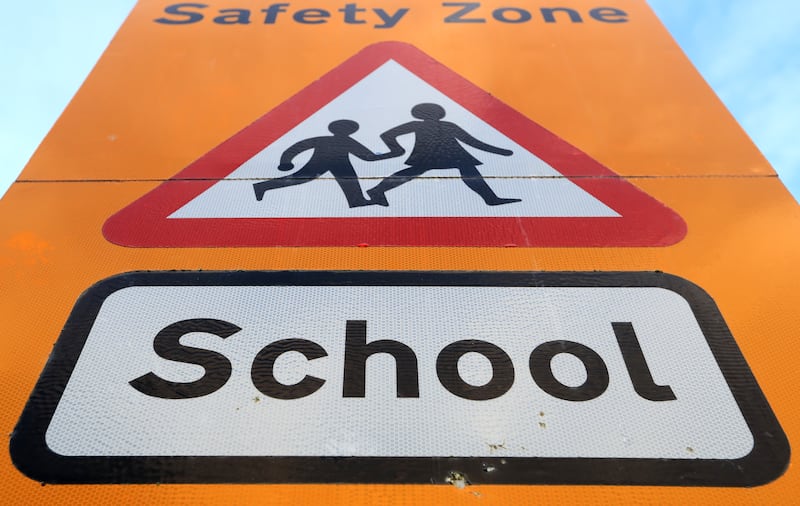Not taking exclusion seriously; asking the child who is being bullied to be the one to make changes; not standing up to the parents of the child who is bullying; being slow to accept a situation as bullying: they are just some of the dissatisfied responses offered when I asked parents of children who had been bullied about their schools’ response.
Last month, The Irish Times reported that schools will be obliged, under new rules due to be published shortly, to report all incidents of bullying behaviour for the first time, with a view to establishing the extent of bullying in Irish schools.
The procedures will shine a light on the extent of bullying in schools and will feed into an anonymised annual national report.
Schools will be expected to regularly review their records of bullying behaviour to identify trends and to consider what measures could be taken to prevent recurrence.
RM Block
Training will be provided to teachers and school leaders to help with the approach, which forms part of a wider strategy known as Cineáltas – or kindness – which aims to prevent and respond to all types of bullying in schools.
But will the measures go far enough for schools to get on top of bullying?
School principals, in general, will be highly educated, and they will interpret that exactly as they please. Nor will they be told how to run their school
— Cathy, the mother of a bullied child
Cathy’s daughter Sarah started being bullied when she was in primary school. It began with general “picking on her”, says Cathy. “Not only is she soft, she hates getting into trouble. So she won’t draw attention to herself. She won’t tell the teacher.”
Cathy approached the school, which, she says, “did nothing”.
“They basically said, ‘It’s grand, everything’s fine – she’s happy in here’. But she was miserable,” she says.
The bullying continued through sixth class and Sarah began to stop eating. Cathy took her daughter out of school shortly before she finished sixth class.
“They weren’t doing anything about it,” she says. She believes the school was trying to run the clock down until Sarah left primary school and was no longer their problem.
Cathy is deeply unhappy with how the primary school handled the situation. As a school principal herself, she is very familiar with procedures. She says as she tried to get the school to take the situation seriously, she was criticised by the principal for sending too many emails. The principal said no bullying had been observed. The school was not recording incidents, says Cathy.

While things started off well in secondary school initially, Cathy says that after a while the child who had been bullying Sarah at primary began to cause problems for her once more. Only, this time, she involved others.
“She got other children in the school to exclude her. They could go to a match and none of the team would speak to Sarah. She could be away all day and not one person would say a word to her. Excluded on the bus. Excluded at lunchtime,” she says.
Sarah’s eating disorder returned.
“I see it from three sides: the child, the parent and the principal,” she says. “And I also see a huge difficulty with teachers who refuse to intervene and will not record bullying incidents because the paperwork involved is horrendous.”
Cathy says the obligation to report bullying “is there anyway. There’s a statutory mandate for child protection,” she says. She doesn’t believe the new reporting rules will make much difference.
“The same people who filled out paperwork will always fill out paperwork ... School principals, in general, will be highly educated, and they will interpret that exactly as they please. Nor will they be told how to run their school.”
Lorraine, another mother, says two of her children were bullied. Her daughter Rachel had a couple of close friends until fourth class. “Then they started dropping like flies,” she says. “It was like everybody was against her. I was up and down to school, and she wouldn’t go to school ... I couldn’t understand it.”
“The teachers were very good,” says Lorraine, who was told “You have to bring her back in. You can’t leave her out. Tusla will be on the phone.”
Lorraine says the incidents were recorded and a child’s parents were contacted, but nothing changed.
Physical threats were made against Rachel, says Lorraine, including a threat to burn her eyes and a threat with a steel bar. Lorraine discovered a child in the class had been spreading lies about her daughter and was posting it on Instagram. Concerned for her daughter’s mental health, Lorraine changed Rachel’s school.
Lorraine’s son, Aaron, also had a similar experience of exclusion at the school. Lorraine is very much in favour of the obligation to report. “It’s covered up,” she says. Her partner is on the school’s board of management, and she says the meetings reported no incidents of bullying, even though her children were experiencing it.
Craig Petrie, principal of East Glendalough School, is very welcoming of the new anti-bullying action plan and says it is long overdue. “Anything that gives us the chance to refocus and resharpen on this is no harm,” he says.
Petrie believes schools can stand up to bullying “but it takes culture, and culture doesn’t happen overnight. It doesn’t disappear overnight either.”
“We talk about the three pillars of our school being kindness, respect and ambition,” he says. “We’ve had an award for kindness in our school for the last 10 years.”
Parent have to trust that, at the very least, this is going to stop and that their child will be looked after. It’s not enough for a child to have the bullying stop, there has to be room for them to flourish
— Principal Craig Petrie on building a culture of kindness
Petrie says schools need to get creative about showing that they really value kindness. Culture is not just about the absence of negative behaviour, it’s the presence of positive behaviour.
“You cannot be an upstander, rather than a bystander, unless you’re shown how,” he says. “The positive school culture that we see comes down to what students see.”
He says positive relationships between staff and senior students are a powerful example for younger students.
“It promotes their own feeling of wellbeing. It promotes their own sense that this is a safe place to be. They know deep down that if they have a problem, it will get sorted out,” he says.
A good school, he adds, will deal with bullying-type behaviour immediately.
“If we can get to it the first time it happens, then so much the better for everyone involved, but then it doesn’t develop into a case of bullying,” he says.
An “elephant in the room”, he says, are difficulties around trust between schools and parents, something that he says has eroded over time.
“I think trust in our institutions nationally has been eroded. We are more likely to question authority ... and that’s often a very healthy thing, but it can lead to a wariness about the motivations that individuals have for doing certain things,” he says. “Standing up to bullying should never be about making an example of a bully.”
For parents, says Petrie, it goes back to trust.
“They have to trust at the very least, this is going to stop and that their child will be looked after,” he says. “It goes back again to the environment within the school. It’s not enough for a child to have the bullying stop, there has to be room for them to flourish, and for those parts of their lives that have been constricted and contracted because of the bullying to grow.
“How do schools stand up to bullying?” asks Petrie. “All together, and all the time.”

Bullying behaviour: what do to if you suspect your child is being targeted
Robbie O’Connell, principal of St Brendan’s National School in Tralee, Co Kerry, has this advice:
– Understand what bullying is defined as. It’s targeted. It’s intentional. And it’s repetitive. One-off incidents or throwaway comments, unpleasant as they may be, are not considered bullying.
– Notify the school. If the school is not aware of an issue, they cannot address it. Parents and the school can work in partnership to resolve it. Keep the school informed.
– Log all incidents.
– Familiarise yourself with the parental complaints procedure, which will explain when the board of management may become involved.
– Remember, the school may not be able to inform you of any course of action involving the other child.
- Follow The Irish Times education section on Facebook and X (Twitter) and stay up to date























